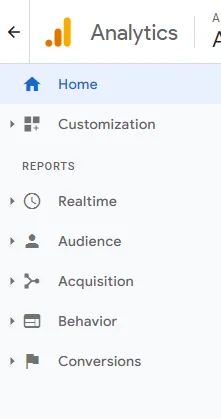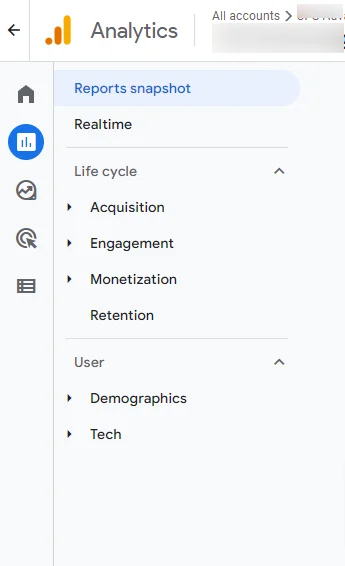Decipher Your Audience: The New Google Analytics 4

Website owners who use Google Analytics are most likely using their Universal Analytics. As of July 1st, 2023, Universal Analytics will no longer be supported in favor of Google’s latest version, Google Analytics 4. This means that in order to preserve your valuable audience data, you should immediately upgrade to Google Analytics 4 if you haven’t already. So, why the change? What did Google improve and remove from the new Analytics? Let’s dive in and find out!
New Reports and New Measurement Models
The first thing we notice in the new GA-4 is that our dashboard seems…different. Google has changed the names of the reports that we are accustomed to seeing and they removed some of the previous groupings that we had in UA. Let’s look to compare.


The driving force behind this is a new measurement model that Google feels will more accurately portray audience data.
In Universal Analytics, tracking was measured with sessions and page views. While it is certainly important to know which pages your audience visits and the length of time their session with your website lasts, there was always this feeling that you didn’t really know what they were doing on your website.
Session, page views, and duration were shorthanded when it came to uncovering how your audience interacted with your website. For instance, there was no way to know if people were opening your site, then moving to another tab in their browser, and finally, getting back to you after checking their email. This led to indiscriminate data that hid from the truth.
GA-4 changes all of that. While you can still see pageviews, sessions, and duration, the focus now is on Events.

Welcome to the Main Event(s)!
An Event can be a number of actions the user takes on your site. Enabling enhanced measurements adds to the event list in fascinating ways. These are just some of the many events that GA-4 is able to track:
- Clicks that lead to an outbound site
- Downloads of files on your site
- Scrolling down and up a page on your site
- The first time a user interacts with a form
- When a user watches a video and how much of it they watch
- And many more
This level of sophistication embedded in the data collection tells the user story in a more appropriate way compared to Universal Analytics. The application for this data is amazing. GA-4 has added an “Explorer” tab that can track the user journey and show which funnels are most effective and which lead to dead-ends. Before GA-4, a story like this was comprised of data and guesswork. GA-4 removes the need to assume behavior and this alone makes the new system more valuable in your marketing, retrofitting, and design efforts.
The Refinement of Exploration: Pathways to Success
The Explore tab allows you to visualize your user journey in a new light. Below I have an example of all the U.S. users on a website and their journey from the beginning of their website session through the last page they used before exiting. This provides incredible insight into where your website corrals its users and how they navigate through to their goals. Let’s check it out!

As you can see, the users split nearly evenly from two landing pages, and each branch off to other pages afterward. There is more data than I am able to show here that tells you precisely where everybody went. Now imagine you want to drive traffic to a new product, service, or offering on your website. Through user path analysis, you will be able to see how many people find your new landing page promoting your service and improve their path through links, redesigned menu options, and page placement. This is one of several ways the new GA-4 lets you visualize data.
Bringing it all together: Events in bunches
Combining user flow with page events can help you maximize conversions on forms, purchases, and button clicks. Understanding behavior is key to improving the user experience on your website and taking advantage of where users are most likely to visit. GA-4 is an important update for Google Analytics.
While it might seem overwhelming at first, the learning curve is not as steep as it appears. Be sure to upgrade your version of Analytics to GA-4 before July 1st 2023! If you need assistance, reach out to the team at Apis, we’d be more than happy to assist you in this transition and set you on the path toward data dominance!




